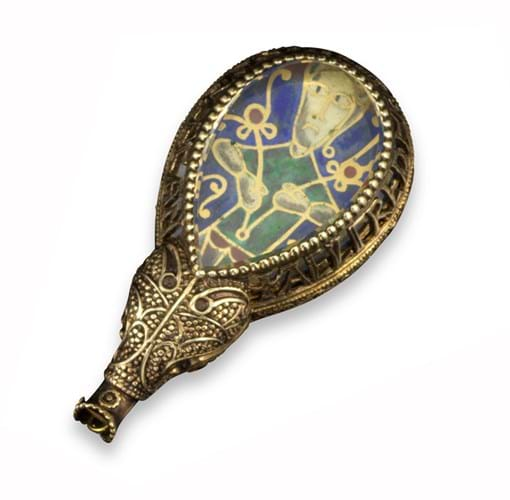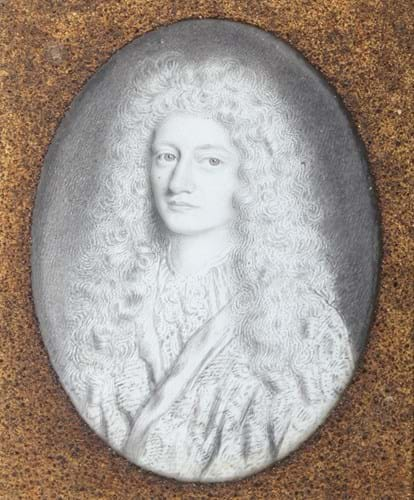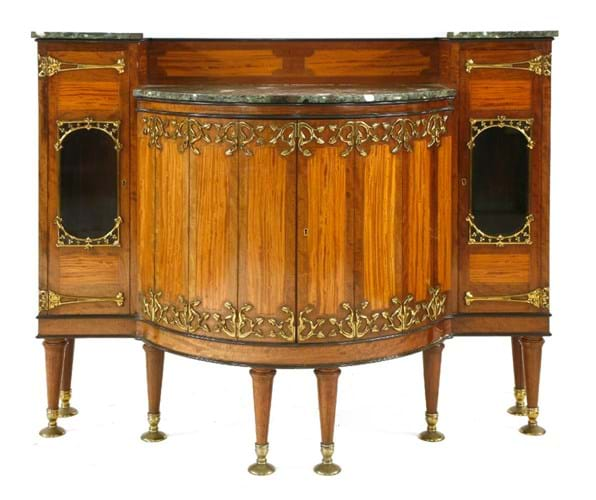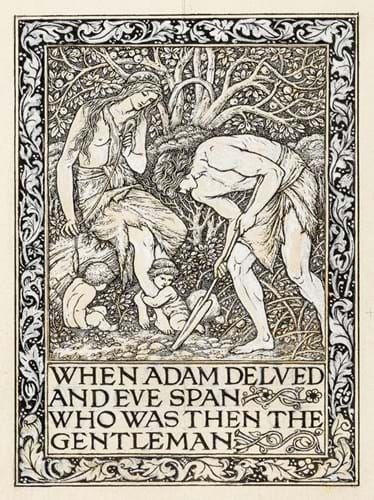1. A Chelsea white-glazed squirrel
Rare examples of early English porcelain are still capable of remarkable sums. This Chelsea white-glazed model of a red squirrel was one of two that emerged at Bearnes Hampton & Littlewood on January 29. They date from the earliest years of the London factory – the so-called Incised Triangle period c.1745-49. Although both were damaged, the model appears to be unrecorded in the factory literature.
Other known examples of Chelsea squirrels are modelled with the animal seated upright on its haunches and eating a nut. These show the subject with its head turned slightly to dexter and tail curled over its back, on rustic mound base. Estimated at £2000-4000 each, one made £16,500, the other £17,000 (plus 21% buyer’s premium).
2. A 19th century replica of the 'Alfred Jewel'
Among the more eagerly contested entries to the Woolley & Wallis (25% buyer’s premium) sale on January 24 was this late 19th century replica of the `Alfred Jewel` - the great example of Anglo Saxon goldsmithing found in Somerset in 1693 and today one of the most popular exhibits at the Ashmolean Museum. Inscribed Aelfred Mec Heht Gewyrcan (Alfred ordered me made) it once formed the handle for an aestel - a pointer used to follow the text in a book. This piece is one of a number of copies commissioned and distributed by Elliot Stock, a London bookseller and publisher, “so that it may be better known than hitherto, and by it to recall the Christian labours of that king”. They were made in silver-gilt (with a few in gold) and were on sale until c.1903. The Victoria and Albert Museum bought at least three examples to be used by art students for drawing practice. Estimated at £200-300, it sold for £2600.
3. A 17th century portrait miniature
Estimated at just £150-250, a 17th century portrait miniature by Scottish artist David Paton (fl.1660-1700) sold for £7500 (plus 20% buyer’s premium) at Bristol Auction Rooms on January 24. The buyer made the winning bid via thesaleroom.com.
Paton, among the best draughtsmen in late 17th century Britain, worked mainly in plumbago (graphite on vellum) with this 8.5 x 11.5cm drawing inscribed verso Portrait of John Horsey, Leghorn 1684. Paton is known to have been in Italy in the 1670s and 1680s - accompanied by William Tollemache (1662-94), the youngest son of his primary patron - and a self-portrait miniature dated 1683, is held in the collection of the Uffizi, Florence.
4. A Benson cabinet
William Arthur Smith Benson (1854-1924) was not just a designer and manufacturer of brass and copper lighting and other household objects. As demonstrated by this rare side cabinet sold at Sworders’ Decorative Art and Design sale in Stansted Mountfitchet on January 29, he was also a designer of furniture.
Benson is known to have produced furniture designs for several well-known Victorian firms - including Coalbrookdale and Shapland & Petter - but best recorded is his relationship with Morris & Co. The veneered mahogany and satinwood cabinet with bold Arts and Crafts gilt brass mounts dates from the 1890s - perhaps shortly before Benson became chairman of the firm after the death of William Morris in 1896.
Due to the high cost of production and the sometime challenging nature of these designs, relatively few pieces are known. The cabinet at Sworders, one of the few to have appeared on the market, carried hopes of £10,000-15,000 and sold to a UK dealer at the lower end of the estimate (plus 23% buyer’s premium).
5. A Kelmscott Press illustration
This pen and black ink over pencil illustration titled When Adam Delved and Eve Span...' was prepared at the Kelmscott Press as a frontispiece to A Dream of John Ball. It was formerly in the collection of Charles Fairfax Murray – a Morris & Co artist and copyist who worked as Edward Burne-Jones's studio assistant in 1867, preparing illustrations for engraving.
Murray would draw over a pale photograph of the original drawing by Burne-Jones, first in silver-point or pencil and then in ink with a fine brush, before it was transferred photographically to the woodblock for engraving by WH Hooper. It is possible that in this case the border and caption is the work of William Morris himself.
At Forum Auctions in London on January 30 it was offered together a copy of a leaflet, using the same illustration on first page, printed for the Ancoats Brotherhood in 1894. This socialist workers' organization founded by Charles Rowley in 1878 in Manchester, provided lectures, concerts and exhibitions for the working classes. Speakers included William Morris, Ford Madox Brown, Peter Kropotkin and George Bernard Shaw. The lot, last sold at Sotheby’s in 1983, went to a buyer using thesaleroom.com at £8500.











